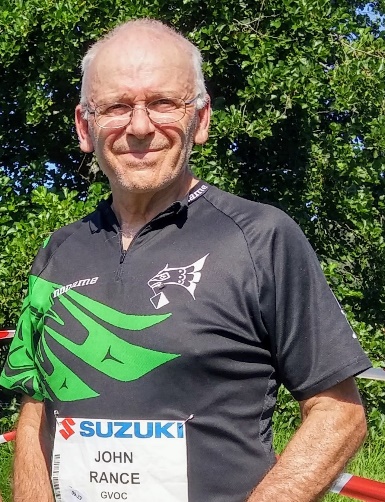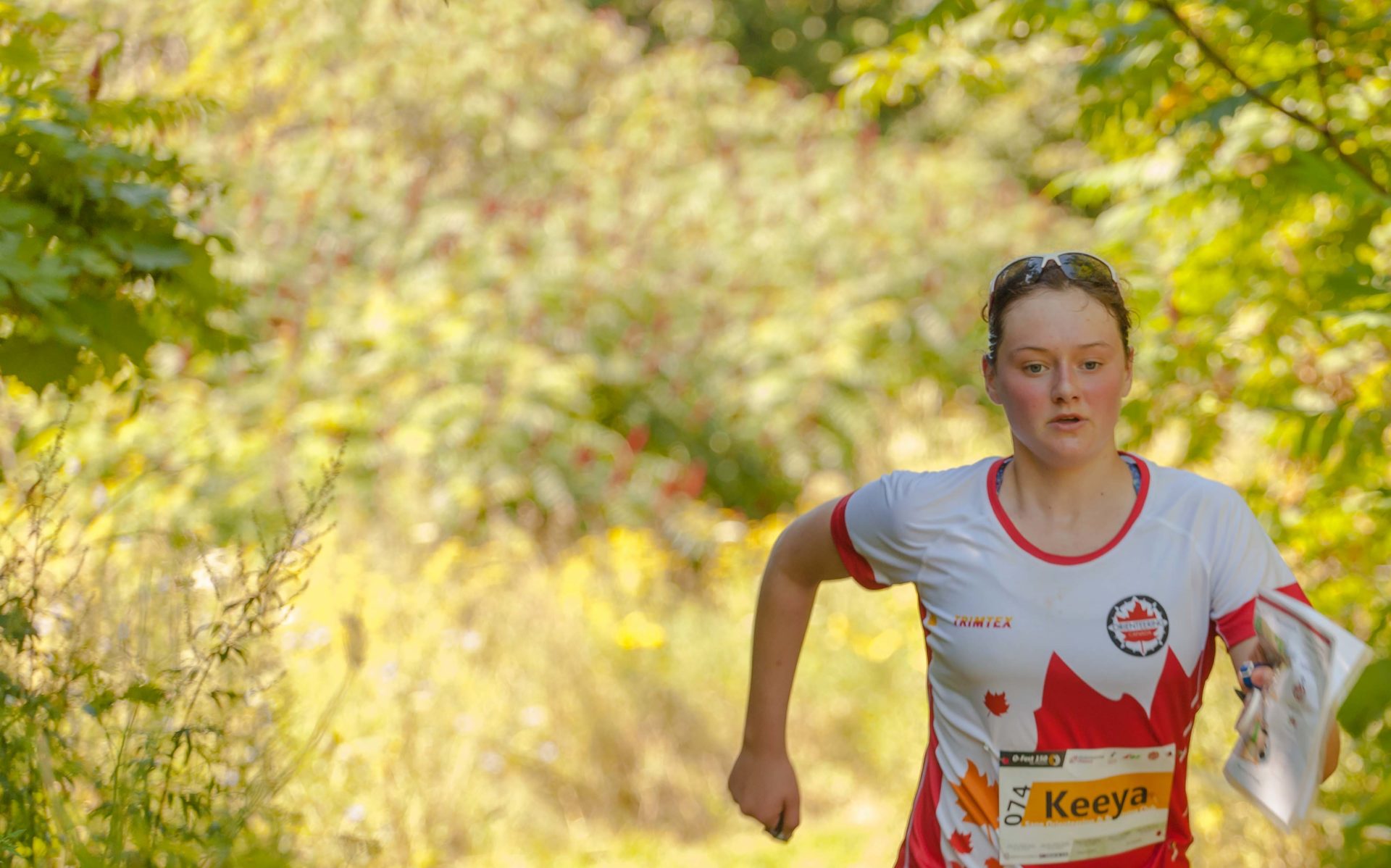
John Rance has been a long-standing part of the orienteering scene in BC, where he has made his mark both as a keen competitor and as a highly respected course planner and instructor of officials clinics. He served as President of Orienteering BC for more years than he cares to remember, and will usually be found enthusiastically welcoming both newcomers and old hands at local O events. In 2019, John was named the OBC Volunteer of the Year in recognition of all his many contributions to our sport over the years.
DW: How did you become involved in orienteering?
JR: We began orienteering when we lived in Australia. We were into rock-climbing then but with a toddler and no family near-by to help with child care we needed something more family-friendly. The principal of my school invited us one weekend to a local forest event. Orienteering welcomed us and here we are decades later.
But really, my interest in maps and navigation began during university summers when I worked in the Yukon and NWT on mineral exploration projects. We used 1:250,000 maps and air-photos with distorted scales, and large sections obscured by cloud, snow or shadow. We were sampling soil and silt, and mapping geology and transferring the data to regional maps. It was difficult but fascinating work and I am amazed how accurate it was possible to be using those very generalized resources.
DW: What type of compass do you use?
JR: I use a Moscow thumb compass with a thin needle and a rotating housing. I am used to it, so I probably won’t change it until I break or lose it. The direction errors I make are not the compass’ fault, anyhow! My all-time favourite compass is the Brunton Pocket Transit I used while I was prospecting. It had a very sensitive needle, damping mechanism, clinometer, sighting mirror, declination adjustment, bubble level, and even a moveable copper loop to compensate for the vertical angle of the magnetic field. It was such a precise and sturdy instrument that I felt inspired to use it well.
DW: In what area of orienteering do you most prefer to volunteer?
JR: I love course planning and controlling. Creating a set of courses, and checking and adjusting them, are endlessly fascinating to me. I especially enjoy checking the sites in the terrain, visualizing how each leg fits into the course and how the courses interact to create an event. While I am checking the courses in the terrain, I try to imagine how the competitors will move through the terrain and I then fine tune the legs and control placement. I learned a lot about enjoyable, fair and appropriately challenging courses from Adrian Zissos. I always think of his “fun” vision whenever I am planning and controlling.
DW: Who taught you to orienteer?
JR: I still use the concepts I learned from Kitty Jones at Blue Lake in the 1980’s. She taught a rigorous, systematic strategy encapsulated in easy-to-remember mnemonics such as CAR (control-attack-route) or traffic light (green-go fast, orange-be cautious, red-take great care). Magnus Johansson taught me sophisticated strategies of map reading—when to super-simplify, ignore details and go fast, and when to slow down and zoom in on details. What they have not yet been able to teach me is consistency and intense, constant focus. I am amazed that, year after year, these people each race well, with only small and quickly corrected errors. I am still working on mastering that focus.
DW: What is your favourite map?
JR: My favourite style of map emphasizes precise navigation and rewards map interpretation rather than raw running speed. So, I prefer middles over sprint or long events. In addition to its justly famous “negative terrain”, Whitehorse has complex sand dunes at Carcross Desert, detailed boulder fields at War Eagle, and complex trail networks on several maps close to the city. So, for me, Whitehorse is a first rank orienteering venue. I also love the open, deciduous forests around Hamilton, Ontario, especially in the autumn when the leaves turn and an orienteering event feels like a run through a golden maze.
This summer, I orienteered for the first time in Sweden. The famous Kalmarden area south of Stockholm, which features relatively steep and vegetated side-slopes crested by open, detailed ridges, was a special joy, and I am looking forward to returning there.
DW: What is your most memorable event?
JR: Without a doubt my most memorable orienteering event was the World Rogaine Championships at Douglas Lake near Merritt, which was my first ever rogaine. There was heat, wind, mosquitoes, forest fires, blisters, rash, terrible food, exhaustion….. and when it was over I couldn’t wait for the next event!
DW: What changes would you like to see in orienteering?
JR: Orienteering is a complex and time-consuming sport, but I would like to see a more informal style of organization for all but the “most important” events. I admire the barebones approach Columbia River Orienteering Club uses for the ‘Deschutes Daze’ event in Bend (OR). They plan just a single long course and the shorter course simply takes a short cut. They don’t bother with start lists, results lists or refreshments—they just focus on good courses.
GVOC has made excellent use of its terrain. LIDAR has made mapping the densely forested areas near the city much more feasible than in the past, and previously unused areas are being developed. However, GVOC’s greatest achievement is its embrace of urban orienteering. The work spearheaded by Thomas Nipen, Magnus Johansson, and others has transformed the sport locally, and made orienteering possible every week of the year. Vancouver itself is mostly mapped now, and only revisions and minor extensions remain to be done. However, adjacent municipalities have many excellent areas waiting to be mapped. I would love to see GVOC’s map total double in the next decade.
DW: In how many countries have you orienteered?
JR: I have orienteered in relatively few countries—probably about a dozen and even fewer US states than that. I hope to add more soon, and would especially like to participate in the early spring events in Portugal or Spain.
DW: What do you love about orienteering?
JR: I love the maps, the forest, the special places, but most of all I am proud and happy to be part of a community of enthusiastic, welcoming, open-minded people working together for a common goal.
 Orienteering BC
Orienteering BC